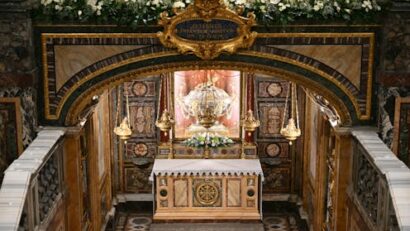
What will happen at the funeral of Pope Francis
A side altar with reliquary at the St. Mary Major Basilica in Rome. Pope Francis has chosen to be buried Läs mer…
Nyheter och länkar - en bra startsida helt enkelt |Oculus lyx vitae

A side altar with reliquary at the St. Mary Major Basilica in Rome. Pope Francis has chosen to be buried Läs mer…